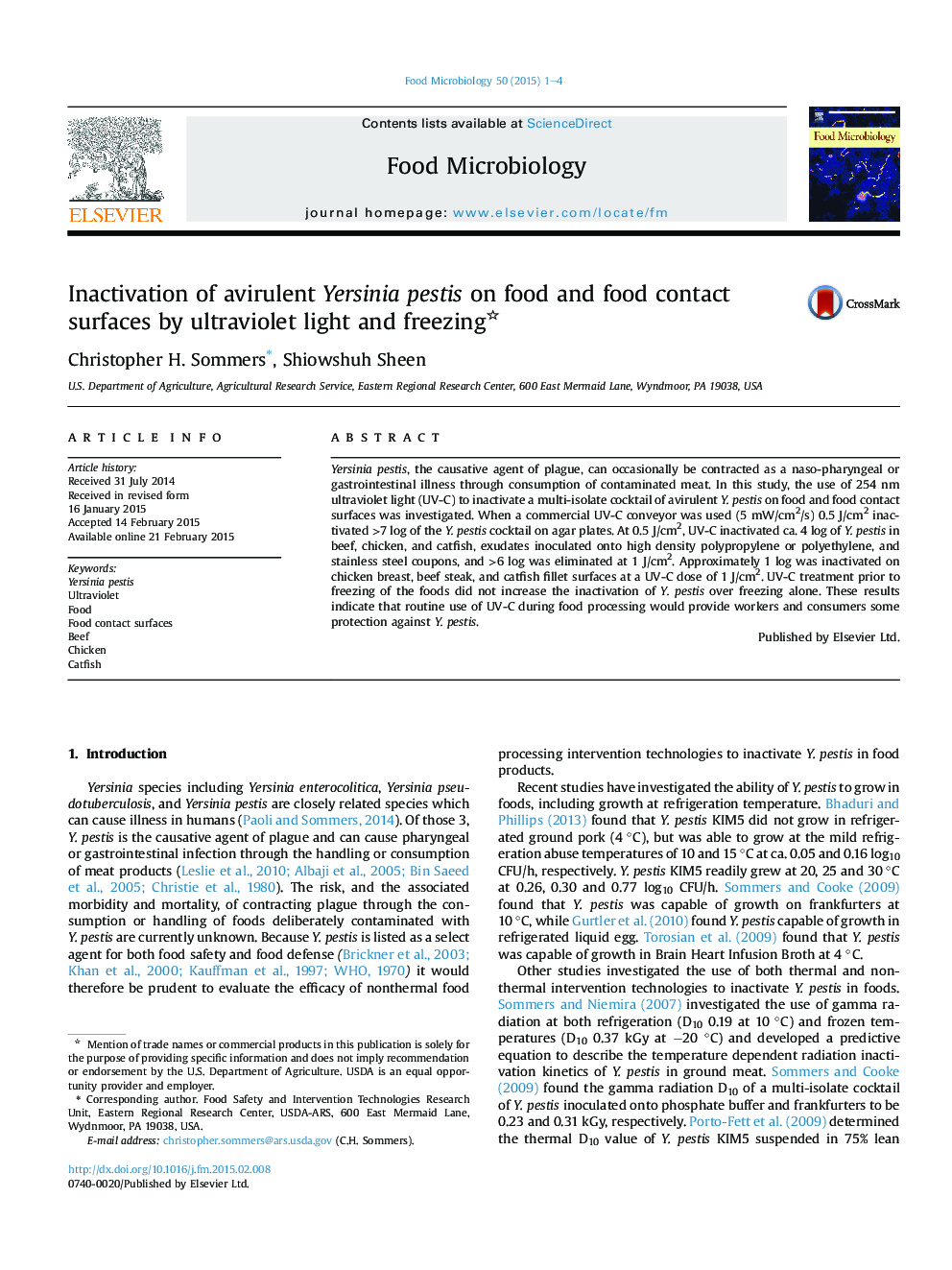| Article ID | Journal | Published Year | Pages | File Type |
|---|---|---|---|---|
| 4362704 | Food Microbiology | 2015 | 4 Pages |
•UV-C inactivated ca. 1 log of Yersinia pestis on catfish, boneless chicken and beef.•UV-C inactivated ca. 4–6 log of Y. pestis suspended in drip on food contact surfaces.•UV-C inactivated >7 log of Y. pestis on agar plates.
Yersinia pestis, the causative agent of plague, can occasionally be contracted as a naso-pharyngeal or gastrointestinal illness through consumption of contaminated meat. In this study, the use of 254 nm ultraviolet light (UV-C) to inactivate a multi-isolate cocktail of avirulent Y. pestis on food and food contact surfaces was investigated. When a commercial UV-C conveyor was used (5 mW/cm2/s) 0.5 J/cm2 inactivated >7 log of the Y. pestis cocktail on agar plates. At 0.5 J/cm2, UV-C inactivated ca. 4 log of Y. pestis in beef, chicken, and catfish, exudates inoculated onto high density polypropylene or polyethylene, and stainless steel coupons, and >6 log was eliminated at 1 J/cm2. Approximately 1 log was inactivated on chicken breast, beef steak, and catfish fillet surfaces at a UV-C dose of 1 J/cm2. UV-C treatment prior to freezing of the foods did not increase the inactivation of Y. pestis over freezing alone. These results indicate that routine use of UV-C during food processing would provide workers and consumers some protection against Y. pestis.
